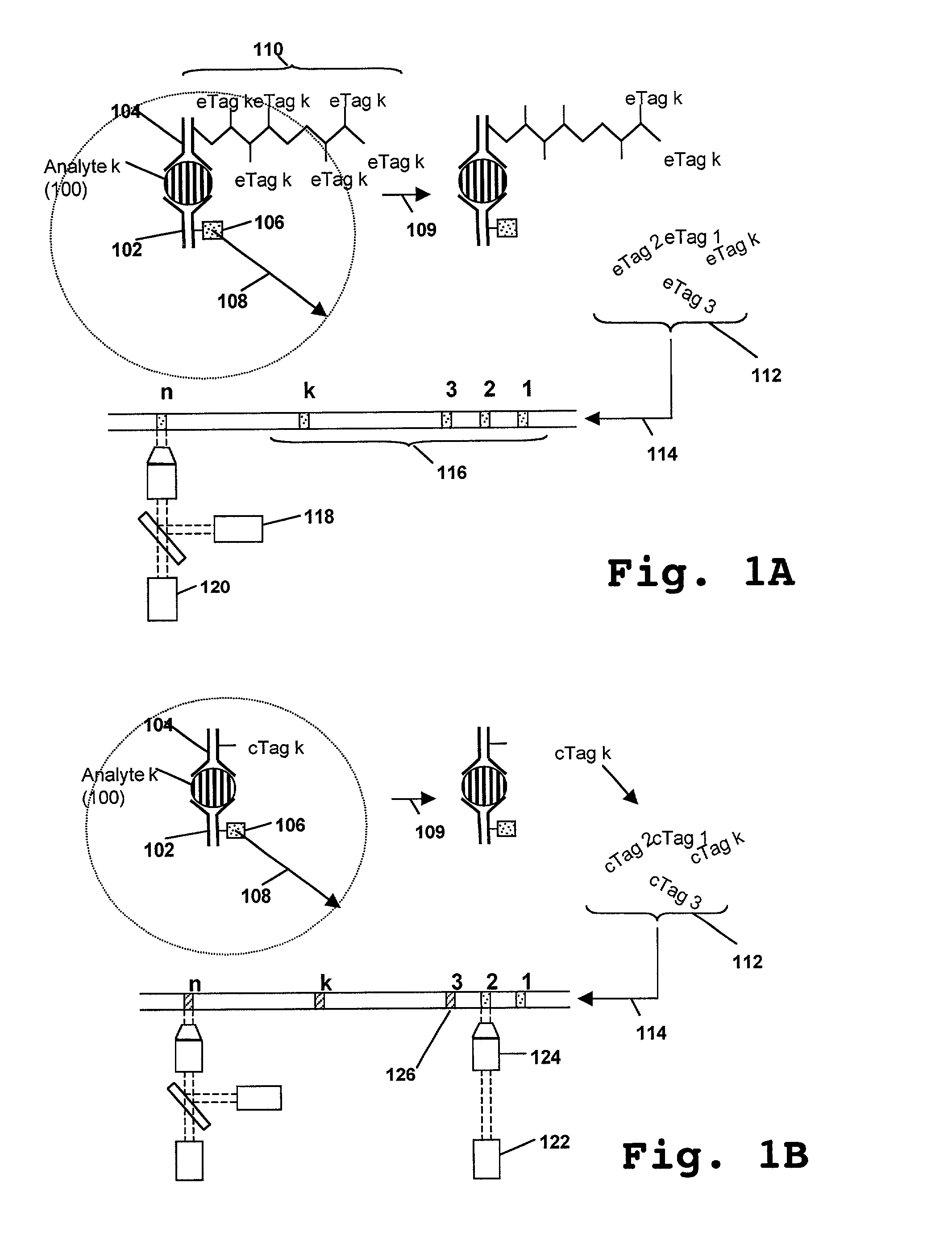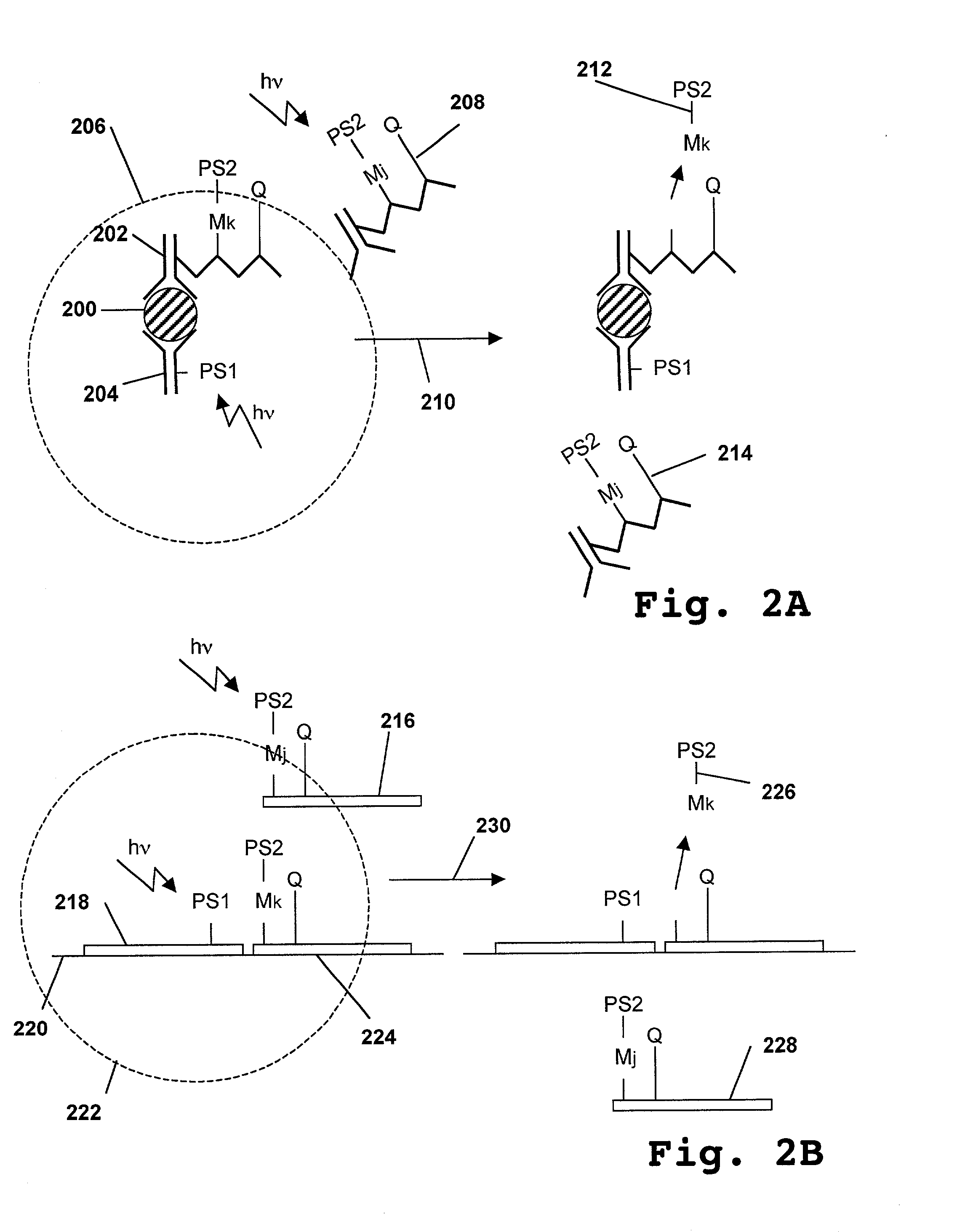Catalytic amplification of multiplexed assay signals
a technology of multiplexing and catalytic amplification, applied in the field of catalytic amplification of multiplexed assay signals, can solve the problems of limited ability to measure multiple analytes in individual samples, low sensitivity of current technologies, and easy multiplexing capability,
- Summary
- Abstract
- Description
- Claims
- Application Information
AI Technical Summary
Benefits of technology
Problems solved by technology
Method used
Image
Examples
Embodiment Construction
[0033]The present invention is directed to compositions and methods for detecting a plurality of analytes. An important aspect of the invention is the use of electrophoretic tags containing at least one signal amplification moiety. Such tags are occasionally referred to herein as “catalytic tags” or “cTags.” As described more fully below, such tags may be used in a wide variety of formats.
[0034]FIGS. 1A and 1B illustrate two multiplexed assay procedures, one employing electrophoretic tags without a signal amplification moiety (FIG. 1A) and one using electrophoretic tags with a signal amplification moiety (FIG. 1B). The advantage of the latter approach is that assay sensitivity relies only partially on the initial cleavage of the electrophoretic tags. Further sensitivity is achieved by signal amplification after the electrophoretic tags are separated. Referring to FIG. 1A, the Kth analyte (100) in a plurality of n analytes in a sample is bound by first binding agent (102), an antibod...
PUM
| Property | Measurement | Unit |
|---|---|---|
| Mass | aaaaa | aaaaa |
| Molecular weight | aaaaa | aaaaa |
| Electrophoretic | aaaaa | aaaaa |
Abstract
Description
Claims
Application Information
 Login to View More
Login to View More - R&D
- Intellectual Property
- Life Sciences
- Materials
- Tech Scout
- Unparalleled Data Quality
- Higher Quality Content
- 60% Fewer Hallucinations
Browse by: Latest US Patents, China's latest patents, Technical Efficacy Thesaurus, Application Domain, Technology Topic, Popular Technical Reports.
© 2025 PatSnap. All rights reserved.Legal|Privacy policy|Modern Slavery Act Transparency Statement|Sitemap|About US| Contact US: help@patsnap.com



